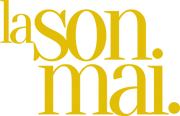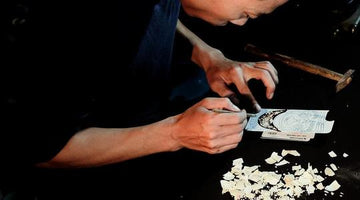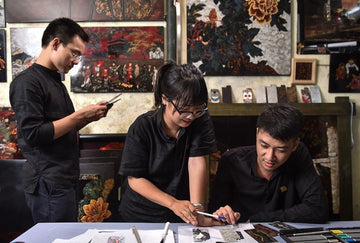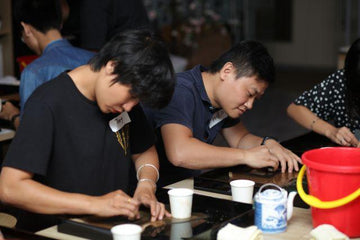Sơn mài, or traditional Vietnamese lacquer painting, is not only unique in its fusion of local and French techniques, but also challenging due to the level of complexity and detail needed to create it.

Photo via ILO in Asia & The Pacific.
The medium is based on a resin extracted from the cây sơn tree that inhabits the mountains of Phú Thọ Province. The resinis harvested in the same way as rubber, by making an incision and letting the sap flow. Fresh lacquer is whitish, and turns brown upon exposure to air. It also poses health problems, as it is a common skin irritant and a cause of contact dermatitis, as well as being potentially carcinogenic.
Black lacquer, the most common color stems from a chemical reaction between lacquer and iron, and results from stirring the lacquer with an iron rod for a few days.
First used during Vietnam’s feudal era, lacquer painting has evolved over time, especially in the 1930s when artists and students at the Hanoi University Fine Arts resurrected the medium, fusing it with French techniques and positioning it as a fine art.

Photo via Bell and Jeff.
The technique consists of applying various layers of carefully measured colors and textures onto a black plywood board. These layers are made up of not only paint and clear lacquer, but precious metals such gold and silver. No matter the material, each layer requires drying and polishing, with specific layers polished more than others to make them more prominent. Fine sandpaper and a mix of human hair and charcoal are used to reach the desired color/layer, but the artist must keep track of each since rubbing too hard can irretrievably ruin the piece.

Photo via Wikipedia.
Between its complexity, health hazards and long production times that can reach months, Vietnamese lacquer painting is a leading contender for the country’s most impressive art form.



